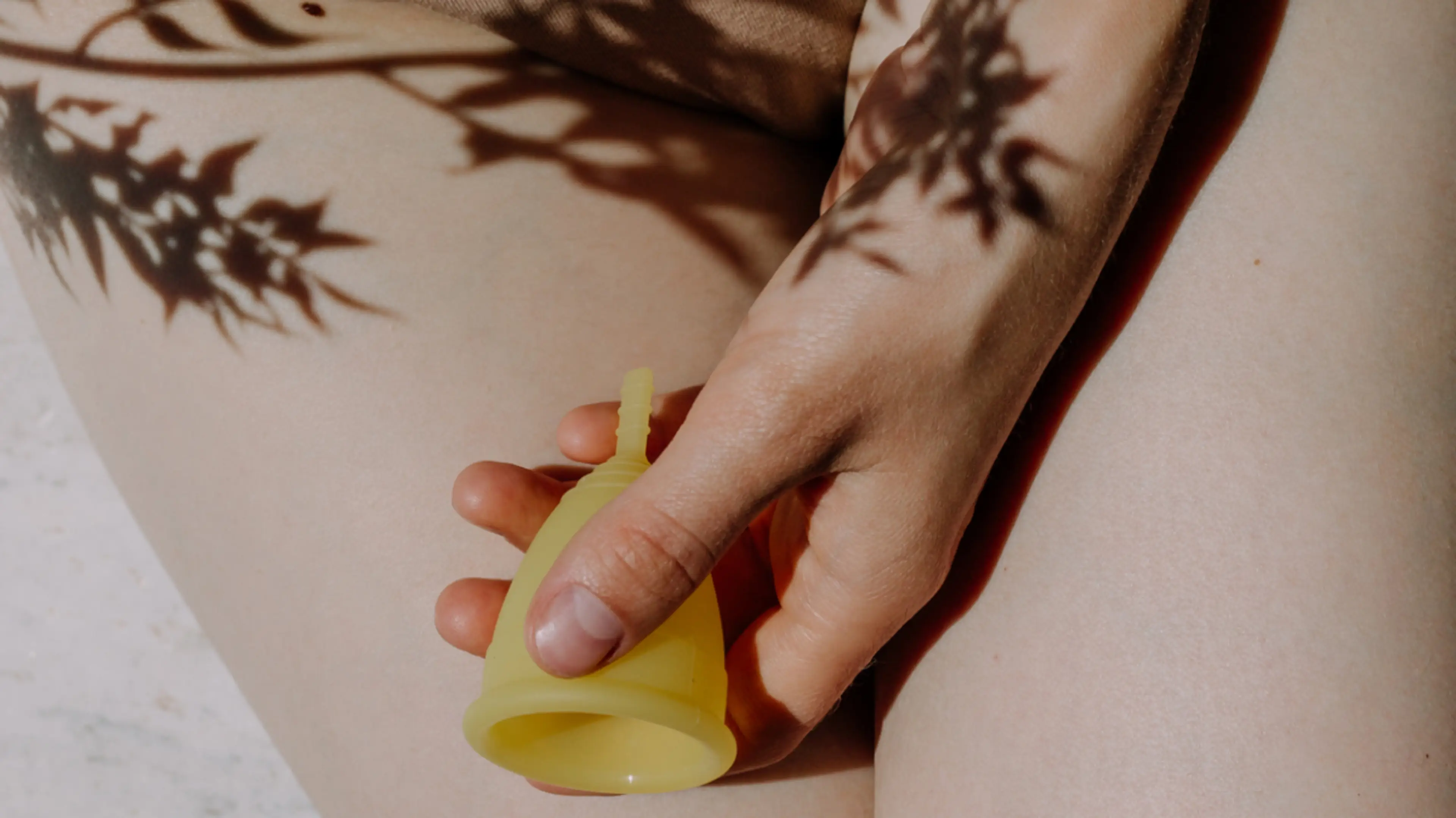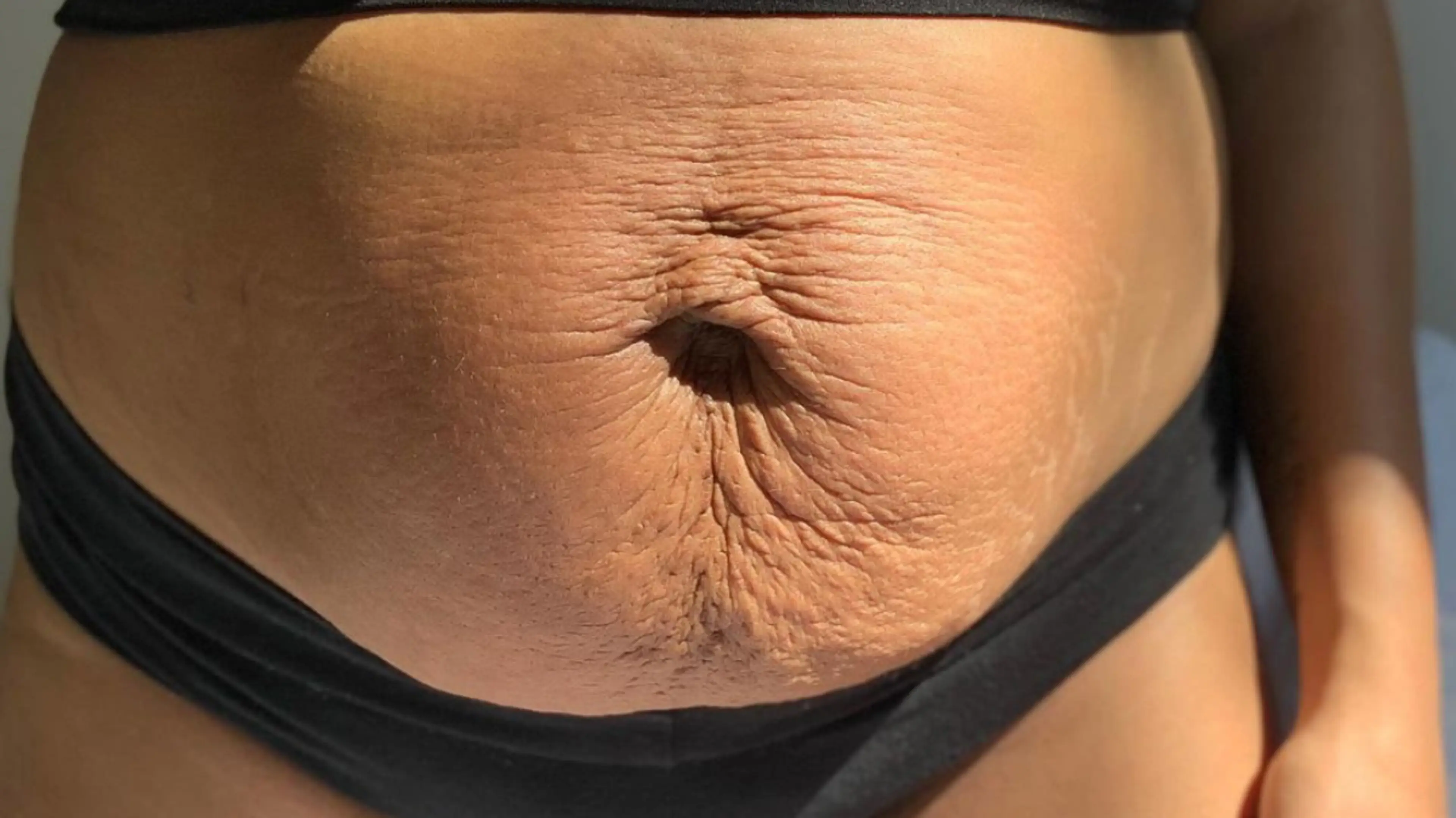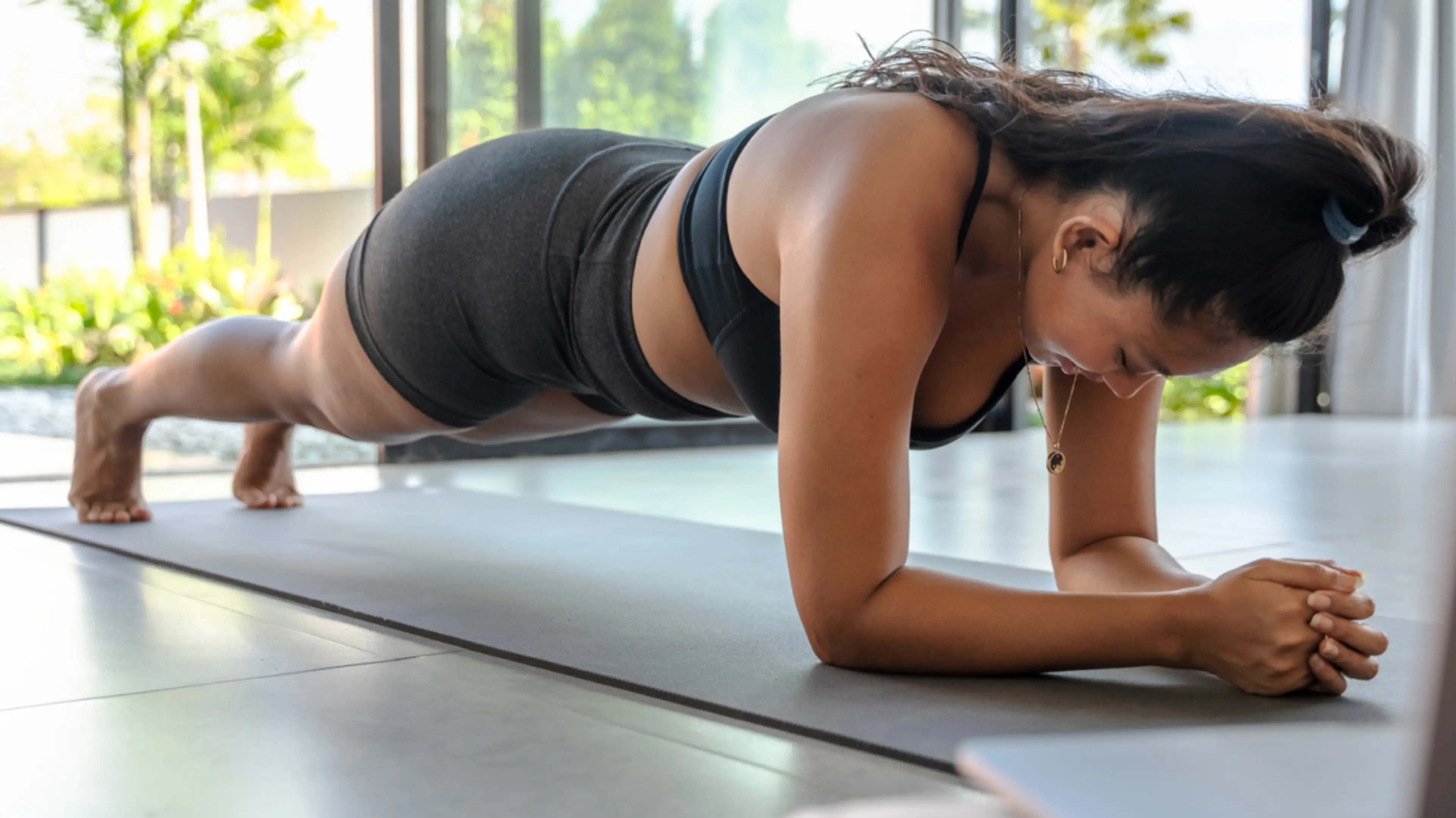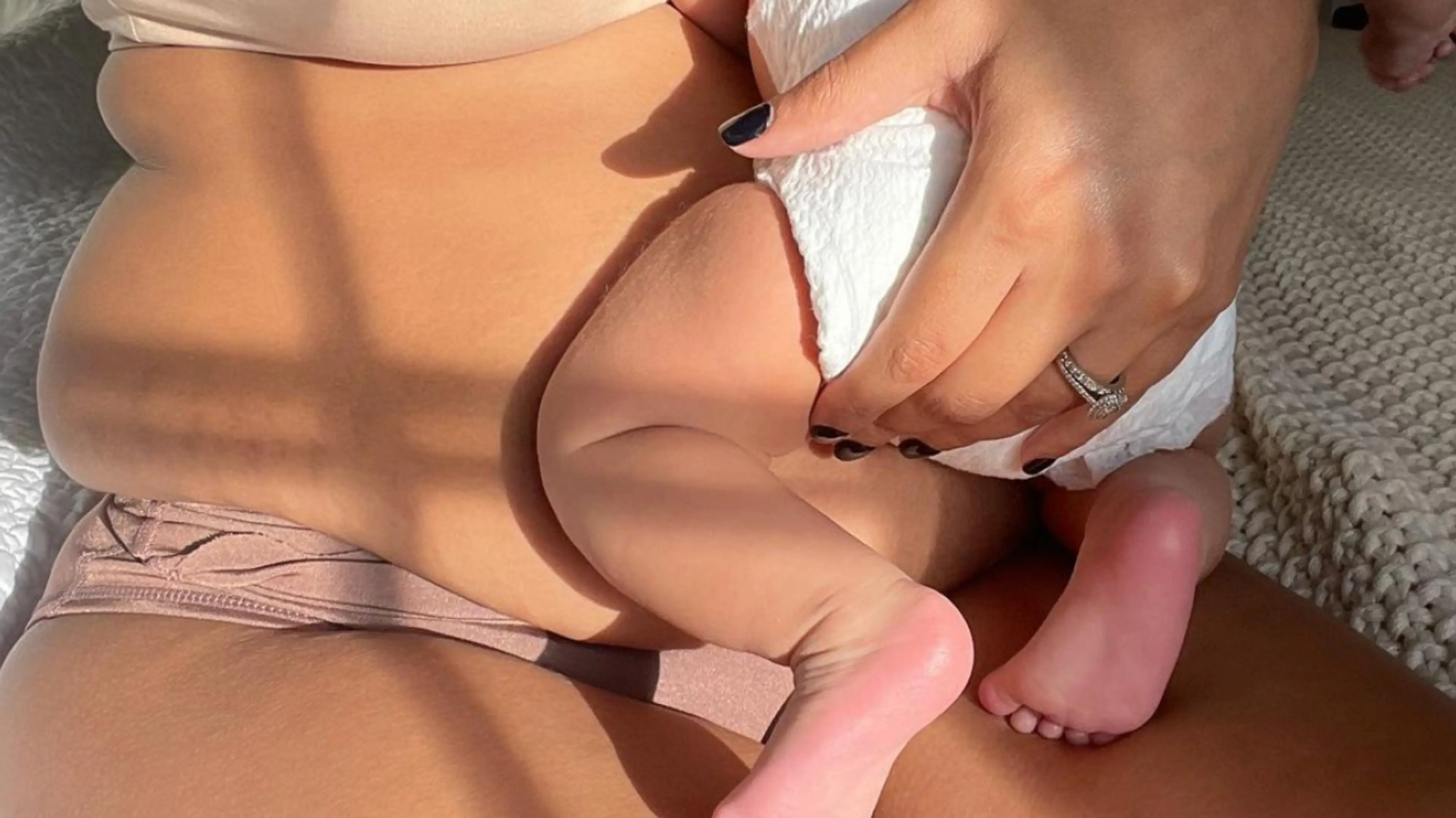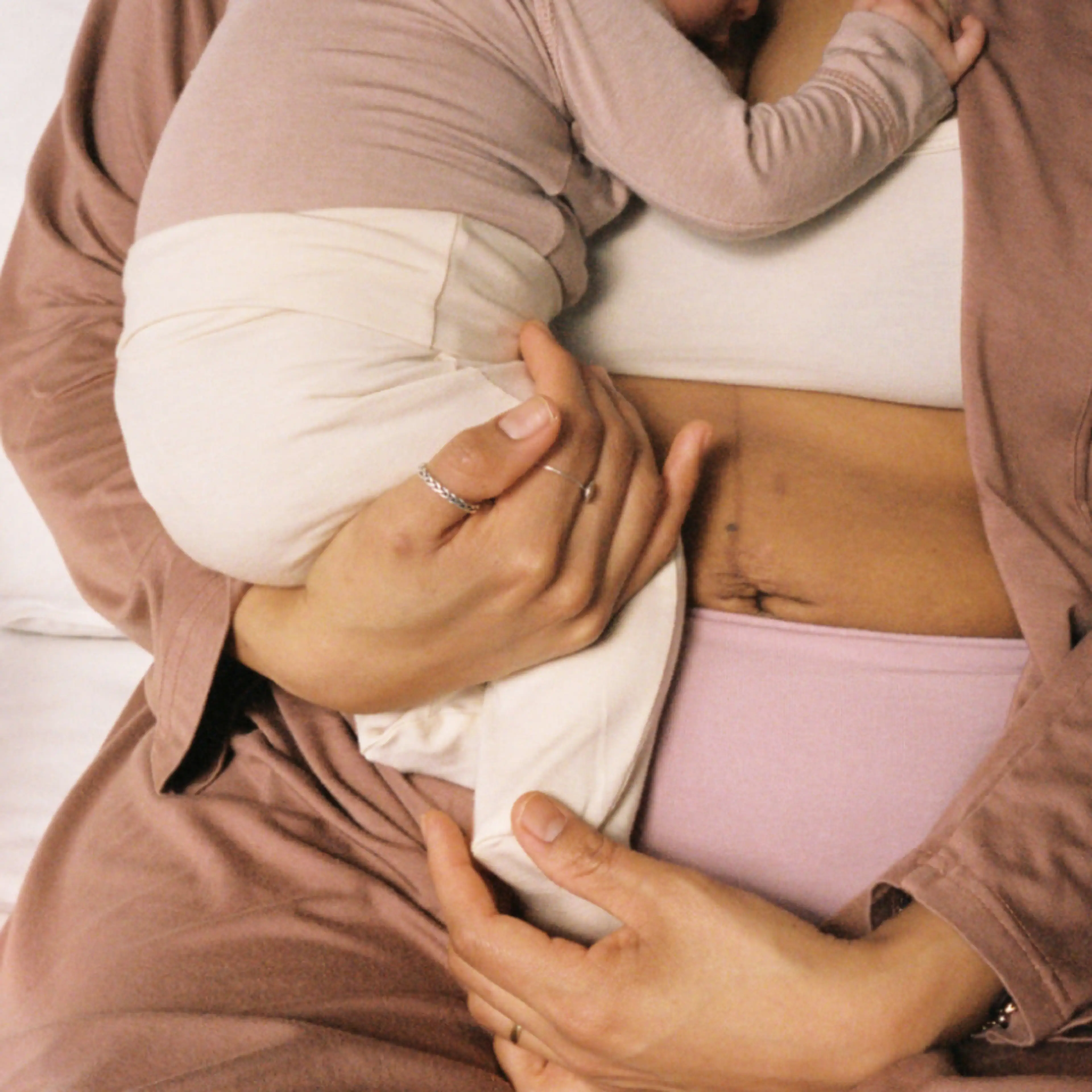TLDR: Diastasis recti, or the separation of your six-pack muscles, is a common condition experienced by postpartum women. While the symptoms are no fun, pilates can help heal your body (and mind!) safely and effectively.
Have you noticed a belly bulge or pooch months to years after having your baby? Have you been experiencing backaches, poor posture, constipation, or urinary incontinence? While some of these things are normal after having a baby, you could actually have a condition called diastasis recti. Luckily, you can fix it with some intervention, including pilates exercises, which are a safe and effective way to help heal diastasis recti. Keep reading to figure out if you have the condition and if Pilates is right for you (and how to get started!).
What is Diastasis Recti?
Diastasis recti is the partial or complete separation of the rectus abdominis1 , or what you might call your “six-pack” muscles, which meet in the middle of your stomach.
Diastasis recti is very common during and following pregnancy—in fact, 60% of women experience the condition2 . This is most likely because the uterus stretches the muscles in the abdomen during pregnancy to accommodate your growing baby.
Even though postpartum can be an overwhelming time, you’ll want to confirm you have diastasis recti so you can start the healing process. Dr. Mae Hughes3 , a physical therapist who focuses on pregnancy, postpartum, and the pelvic floor, adds that “It is important to address your diastasis early on postpartum to ensure you don’t make it worse. An untreated diastasis can have a ripple effect in the way your body functions because your core muscles are not properly functioning, which can cause low back pain, hip pain, leakage, etc.”
Symptoms of diastasis recti include:
Constipation
Low back discomfort
Poor posture
Urinary incontinence
Bloating
Bulging or pooched belly
How to Self-Check for Diastasis Recti
Unfortunately for new moms, the symptoms of this condition may not be obvious after giving birth. If you want to try and self-check at home, follow these steps:
Lay on the floor with your knees bent and feet flat on the floor.
Raise your head and shoulders off the floor into what would look like a crunch position. Support your head and neck with one hand.
On the other hand, feel above and below your belly button to see if there’s a gap.
You may have diastasis recti if you can fit one or two fingers between your abdominal muscles. Hughes adds, “If you notice any abdominal coning at the midline of your belly while performing a core exercise, then it is likely you have some form of diastasis and you are having a difficult time properly managing your intra-abdominal pressure.” Of course, you should always reach out to your doctor if you have concerns or if you can’t tell yourself.
What do you do if you find out you have diastasis recti? Step one is to build back up that core. Enter: Pilates.
5 Benefits of Pilates for Diastasis Recti
One of the best ways to strengthen your core is by practicing Pilates. Pilates has been around since the early 20th century and was originally devised to help dancers recover from injuries. “Pilates is known for deep core and hip strengthening, both of which are extremely important for addressing diastasis recti,” Hughes says. Pilates focuses on the engagement of the core stabilizer muscles, which consist of the diaphragm, transverse abdominis, pelvic floor muscles, and multifidus. In pilates, you focus on precise movement, while being mindful of your breathing. It’s a great, low-impact workout that is generally safe for pregnancy and beyond.
Some of the specific benefits of pilates for diastasis recti are:
Pilates engages the core stabilizing muscles
When it comes to healing diastasis recti, it’s all about building back your core muscles. During pregnancy, these muscles weaken and stretch4 as your belly and baby continue to grow.
During postpartum, it’s important to retrain those muscles. As you build back your core, many of the symptoms of diastasis recti may fade away.
Pilates can be easily modified
With diastasis recti, you may not be able to do certain movements you once could. With pilates, there are many ways to easily modify your workout. Certain movements can exacerbate diastasis recti, but with a pilates workout that is specific for diastasis recti, you’re less likely to experience injury. And remember that, with any postpartum exercise, you don’t want to overdo it and risk causing an injury.
When you’re getting started, Hughes says you should reach out to someone knowledgeable about the condition. “I recommend ensuring your pilates instructor is well educated regarding modifications for postpartum healing, as many of the high-level core strengthening exercises in pilates can be inappropriate for a healing diastasis. I also recommend working with a pelvic floor physical therapist prior to returning to Pilates to ensure you are properly engaging your deep core and managing your intra-abdominal pressure.”
It’s easy to practice at home
Being a new mom, leaving the house for a workout is not always an option. Luckily, there are many pilates programs online. (However, as Hughes noted above, it’s best to first consult with a Pilates instructor familiar with postpartum healing before starting an at-home pilates practice.)
You can set yourself up anywhere in the house and get your workout in. Carve out a time that works for you and make it part of your self-care routine.
You need minimal equipment
A huge benefit of Pilates is that there’s very little equipment required. All you really need is a mat, and even that’s not a deal breaker. Pilates focuses on the movements that use your own body weight to build strength.
For a new mom, the ease of being able to practice Pilates without cluttering the house with more stuff is super helpful.
It focuses on the mind-body connection
Aside from the benefit of strengthening your core muscles, Pilates also focuses on the mind-body connection. The mind-body connection is the idea that your body and mind work together for your overall wellness.
When you’re stressed, your body may feel tense. At the same time, if you have any aches in the body, it may cause you to be more anxious.
In the postpartum period, your body is going through so many changes. Focusing on this mind-body connection may help you boost your mood, relax your tense muscles, and be more mindful during your day.
Strengthening this connection may also help you be more attuned with your body, allowing you to put more attention on healing your diastasis recti.
How Long Does it Take to Heal?
Hughes notes that the timeline may take several months to heal. “While it is impossible to say exactly how long it will take for a diastasis to heal, many guidelines typically require completion of a six-month, progressive abdominal strengthening program before considering alternative methods of treatment,” Hughes says. She also notes that pilates and other exercises aren’t a sure bet for healing: “Simply performing any abdominal exercise does not guarantee your diastasis will heal. You have to perform each exercise with appropriate form and intra-abdominal pressure management as well as ensure you are not progressing prior to your body’s readiness.” When in doubt, reach out to your provider or a specialist. And above all, give yourself grace and patience in the healing process. Hughes says, “I often tell my patients if it takes nine-plus months to grow a baby, expect nine-plus months to recover and rebuild from delivering one!”
The Pilates Moves to Avoid
While pilates is a generally safe workout for pregnancy and postpartum, it’s always possible to cause strain when it comes to exercise. Let’s talk about some positions that you should steer clear of while healing your diastasis recti. These exercises could put too much stress on your abdomen muscles and worsen the problem.
Forward flexion (essentially the act of bending forward)
Exercises that cause extra intra-abdominal pressure—push-ups, planks, and sit-ups
Ab twists
Backbends
Heavy lifting
Once your diastasis recti have been corrected, you can add these exercises back into your practice.


